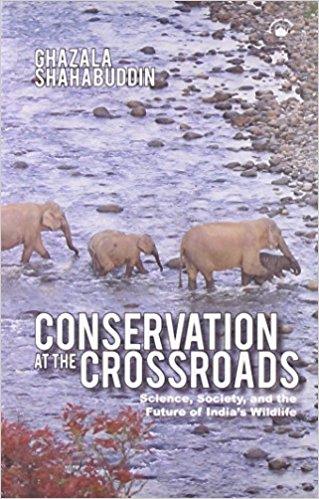The author begins by saying, ‘this book is an attempt to try and understand the shortcomings of the varied strategies that have been
adopted for biodiversity conservation by India since Independence, both in terms of policy as well as implementation’. Keeping the Sariska National Park in view, a background with which Shahabuddin is familiar, she goes on to examine the crucial issues in the discourse on conservation in India today. She begins by citing the extinction of the tiger in Sariska and raises a series of questions as to what went wrong. What have our policies been? How are these policies formulated and implemented? Who are the players, visible and invisible, in contemporary Indian conservation?
While critiquing the policy of the Government of India in the field of management of protected areas, Shahabuddin touches upon most of the important issues such as displacing forest dwellers for the sake of protecting the tigers, involving people in conservation work, participatory management and the various acts that have come up in recent decades. Her attention is mainly on people in this book. Shahabuddin supports her arguments with solid empirical data.

